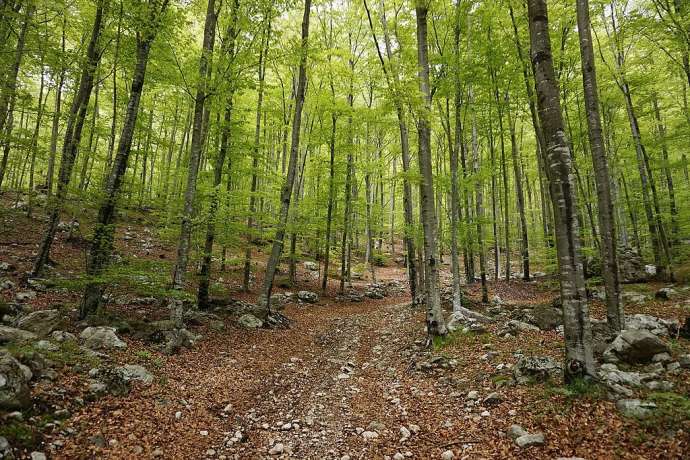STA, 25 August 2019 - The Ljubljana wider area covers 211 square kilometres, including 62 square kilometres of forest, with the land around the city being natural habitat for various animals, including numerous bird species as well as endangered species or even those that have been already considered extinct.
Ljubljana has some 300,000 inhabitants and at least so many birds nesting in the area.
The little bittern has been spotted in the Tivoli Nature Park and in the Rožnik and Šiška hills, with the bird frequenting urban areas as well.
It is critically endangered in Slovenia or even thought to be extinct. As its name implies, it is relatively small compared to other herons.
The park's managers have come across the allegedly extinct noble crayfish species, which used to be very common in the Slovenian rivers, but suffered a major population drop due to invasive crayfish carrying the duck plague.
The area is home to almost 500 butterfly species, some 110 beetle species, around 100 bird species, including 68 who nest in the city, some 50 spider species, 36 dragonfly species, 12 various species of reptiles and 8 species of bats.
Among mammals, visitors can spot the common shrew, the southern white-breasted hedgehog, the edible dormouse, squirrels, deer and otters.
According to Marko Jonozovič of the Forest Service, the Ljubljana rural area is also home to the brown hare and pheasants, foxes, badgers and the beech marten, with introduced or invasive muskrat and nutria species living in wetlands or alongside stretches of water.
The brown bear rarely finds itself in the forests within the Ljubljana urban area - occasionally the bear enters it through the Golovec animal-friendly passageway or other highway overpasses and underpasses, but mostly it roams the south-western part of the Ljubljana Marshes where it can find enough food and enjoy some peace.
Wolves and lynx have not been present in the past few decades within the Ljubljana ring road, has said Jonozovič, though the former occasionally visit the marshes.
Meanwhile, the chamois has been spotted in the river Iška canyon, some 20km south of Ljubljana.
West of Ljubljana, near Dobrova, in the Polhov Gradec hills, the mouflon has been detected as well. Moreover, the wild boar, deer, and jackal have been known to be present in the wider forested area of Ljubljana.
Among local birds, house sparrows, blackbirds, pigeons and great tits are the most common. In the past decades, the city has witnessed increasing numbers of crows, with the birds feeling safe in the centre due to the abundance of food.
The Tivoli Nature Park and the Rožnik and Šiška hills are home to protected birds, listed on the Natura 2000 list as threatened species in Europe, such as mallard ducks, the common buzzard, the Eurasian scops owl, the black woodpecker.
Moreover, endangered species, such as the black and white stork and the jackdaw have been spotted in the park as well.
Fortunately for those taking a stroll around the park, there are no lethal snakes in the area, since vipers, which are present in Slovenia, prefer rocky terrain.







